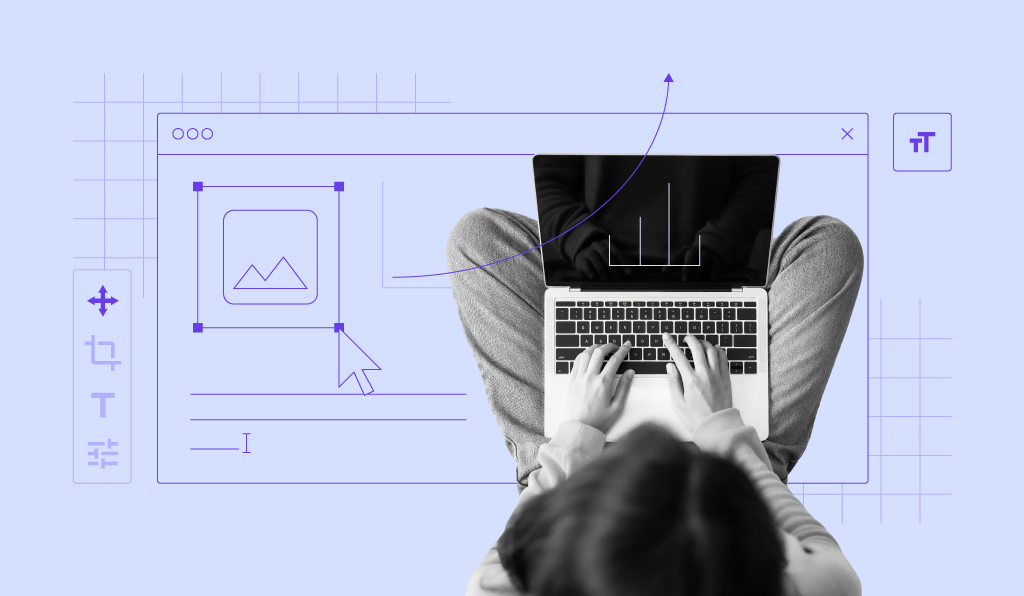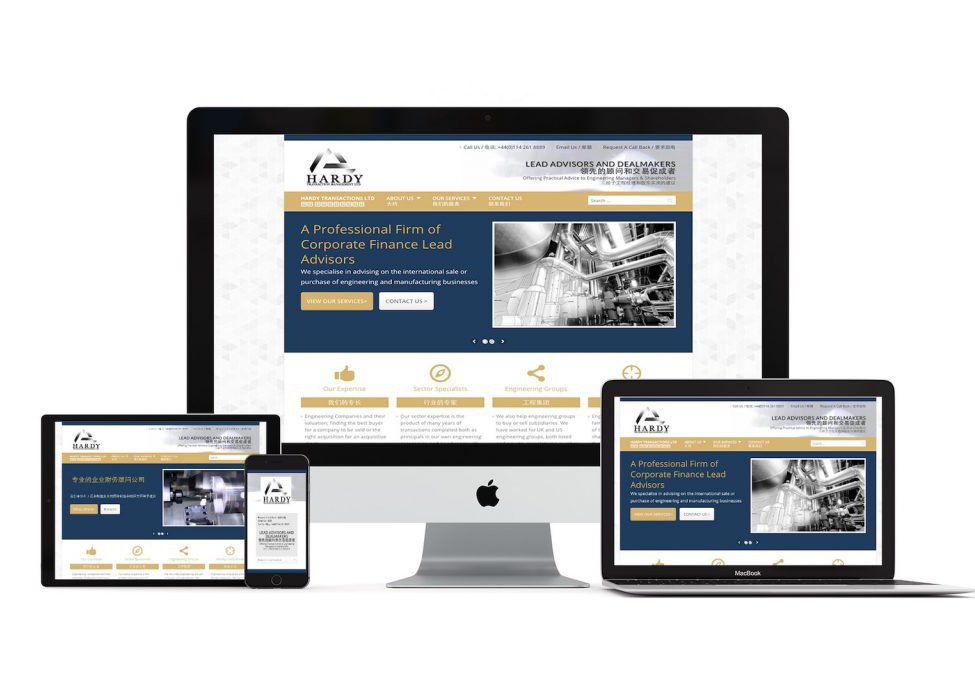Unraveling the Complexities of Receptive Web Design and Its Influence On Accessibility and Performance Throughout Different Instruments
Receptive website design (RWD) has become an essential method in developing digital experiences that are both easily accessible and practical throughout varied devices. By integrating techniques such as liquid grids and CSS media inquiries, RWD not only improves user involvement but also addresses vital availability issues for people with handicaps. As the landscape of digital communication continues to develop, recognizing the implications of RWD becomes necessary. The complexities entailed in accomplishing this equilibrium raising pertinent questions about best techniques and possible risks that warrant further expedition.
Understanding Responsive Web Layout
Responsive web design symbolizes the concept of adaptability, guaranteeing that internet sites give an optimal viewing experience throughout a range of gadgets and display dimensions. This method utilizes versatile grids, designs, and pictures, enabling the content to dynamically adjust based on the user's tool. The increase of mobile net usage has made responsive layout not just a trend, but a requirement for modern-day web growth.
At its core, receptive website design emphasizes fluidity and scalability. By utilizing CSS media questions, programmers can tailor styles to varying display dimensions, guaranteeing that message continues to be understandable and photos are presented suitably. This strategy fits the diverse array of gadgets, from mobile phones to huge desktop monitors, facilitating smooth navigating and communication.
In addition, receptive web design enhances individual interaction by reducing the demand for excessive zooming or horizontal scrolling, which can detract from the customer experience. By prioritizing availability, companies can get to a broader audience, ensuring that all users, despite device, can access material successfully. Ultimately, understanding receptive internet layout is crucial for producing sites that are not only aesthetically enticing however user-friendly and additionally practical across varied platforms.

Key Concepts of RWD
Highlighting versatility and user-centric layout, the vital principles of responsive website design (RWD) rotate around producing a seamless experience no matter the tool being used. One basic concept is fluid grids, which use family member systems like percents rather of taken care of measurements. This strategy guarantees that format elements adjust proportionally to varying display dimensions, keeping aesthetic comprehensibility.
One more important principle is flexible images and media, which resize within their containing aspects. web design Johannesburg. By using CSS strategies such as max-width, designers can protect against pictures from exceeding their moms and dad containers, ensuring that visuals remain sharp and appropriately scaled throughout tools
In addition, media inquiries play a pivotal duty in RWD, allowing programmers to use particular CSS designs based on the features of the gadget, such as height, positioning, and width. This ability makes it possible for tailored experiences that boost functionality and involvement.
Moreover, a mobile-first method is progressively favored, where layouts prioritize smaller displays and progressively enhance for bigger gadgets. This principle not just enhances efficiency however additionally resolves the growing prevalence of mobile browsing. Jointly, these concepts form the backbone of responsive website design, promoting a easy to use and adaptable electronic setting.

Effect On Availability
The combination of responsive website design plays a vital role in boosting access for all users. By taking on an adaptable design that adapts to varying display sizes and orientations, receptive layout makes sure that web content remains easily accessible and clear despite the gadget used. This versatility is particularly considerable for individuals with impairments, who might rely upon assistive innovations that operate much more effectively when web content is structured responsively.
In addition, responsive web design decreases the probability of concerns such as straight scrolling, which can hinder users with electric motor specials try this web-site needs or aesthetic impairments. By giving a constant user experience across devices, designers can prioritize accessibility functions such as key-board navigation and display visitor compatibility, permitting a much more inclusive electronic setting.
Furthermore, online search engine increasingly favor receptive styles, which can enhance visibility for users seeking available material. As a result, services and organizations are motivated to embrace these methods not just to abide by access standards yet additionally to reach a more comprehensive audience. Ultimately, receptive website design contributes in promoting fair accessibility to info and services throughout varied individual teams, therefore fostering an inclusive electronic landscape.
Performance Throughout Devices

In addition, the performance of internet applications can vary considerably across tools. Mobile phone often have restricted handling power and slower web connections, which can affect loading times and total individual experience. It is important for designers to maximize images, manuscripts, and various other sources to make certain that efficiency stays constant and effective, no matter the gadget being used.
Additionally, the layout and structure of content must adjust fluidly to different screen dimensions to keep functionality. This versatility not only boosts individual engagement but also lowers disappointment, inevitably causing higher retention prices. In summary, focusing on performance throughout tools is crucial for producing a reliable and inclusive web visibility that satisfies the diverse demands of customers.
Ideal Practices for Application
Executing receptive website design properly requires a critical strategy that Discover More Here prioritizes customer experience and availability. To attain this, start by embracing a mobile-first layout ideology, which emphasizes developing an optimal experience for smaller sized screens prior to scaling as much as bigger devices. This approach makes certain that vital material is prioritized which features are effortlessly integrated.
Next, utilize liquid grids and versatile designs. Employ loved one systems, such as percentages, as opposed to dealt with units like pixels - web design Johannesburg. This versatility enables content to resize dynamically based upon the display's measurements, enhancing use across different gadgets
In addition, include media inquiries to apply particular CSS guidelines based on the qualities of the gadget, such as size, height, and resolution. This targeted method permits tailored experiences that satisfy the special abilities of each tool.
Furthermore, focus on ease of access by ensuring that all interactive aspects are conveniently accessible through touch or key-board. Carry out semantic HTML to boost display visitor compatibility and preserve high contrast ratios for readability.
Conclusion
To conclude, responsive internet layout offers as a foundational element in producing functional and accessible digital experiences throughout diverse gadgets. By incorporating liquid grids, adaptable images, and CSS media questions, responsive style not just enhances individual involvement however additionally advertises fair accessibility to info for all people, including those with specials needs. Abiding by ideal methods in application ensures that web sites stay versatile, eventually fostering an extra inclusive electronic environment that meets the differing needs of customers.
Receptive internet style (RWD) has arised as an essential approach in creating digital experiences that are both practical and obtainable across diverse devices.Responsive web layout embodies the principle of flexibility, ensuring that internet sites offer an optimal watching experience across a range of gadgets and display dimensions.Emphasizing flexibility and user-centric design, the crucial concepts of responsive internet layout (RWD) rotate around producing a seamless experience regardless of the device being made use of.Functionality across tools is a key consideration in internet style, as customers involve with material through a variety of systems, consisting of smartphones, desktop computers, and tablet computers.In verdict, responsive internet design serves as a fundamental aspect my review here in developing useful and available electronic experiences across diverse devices.